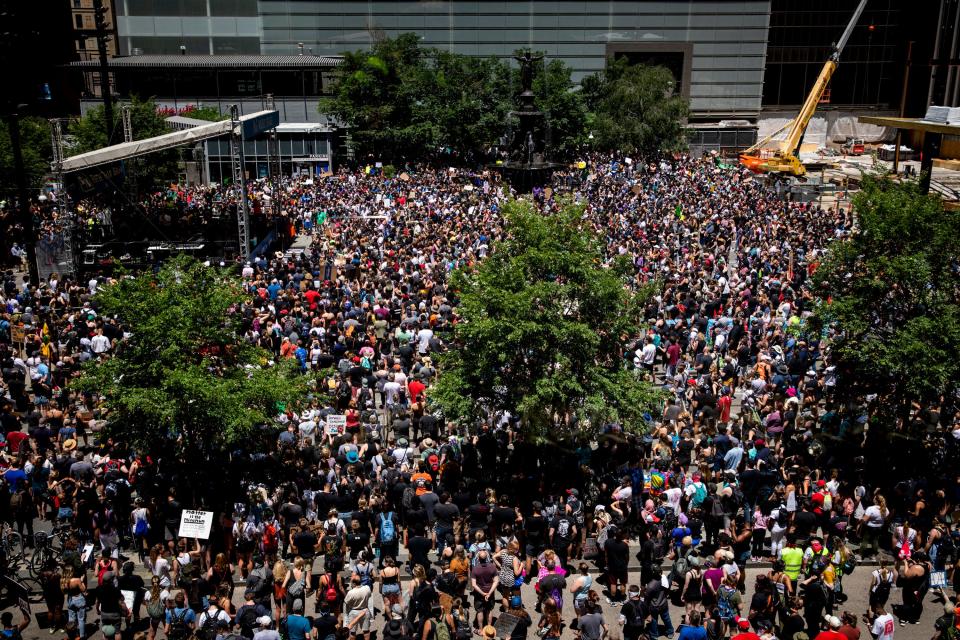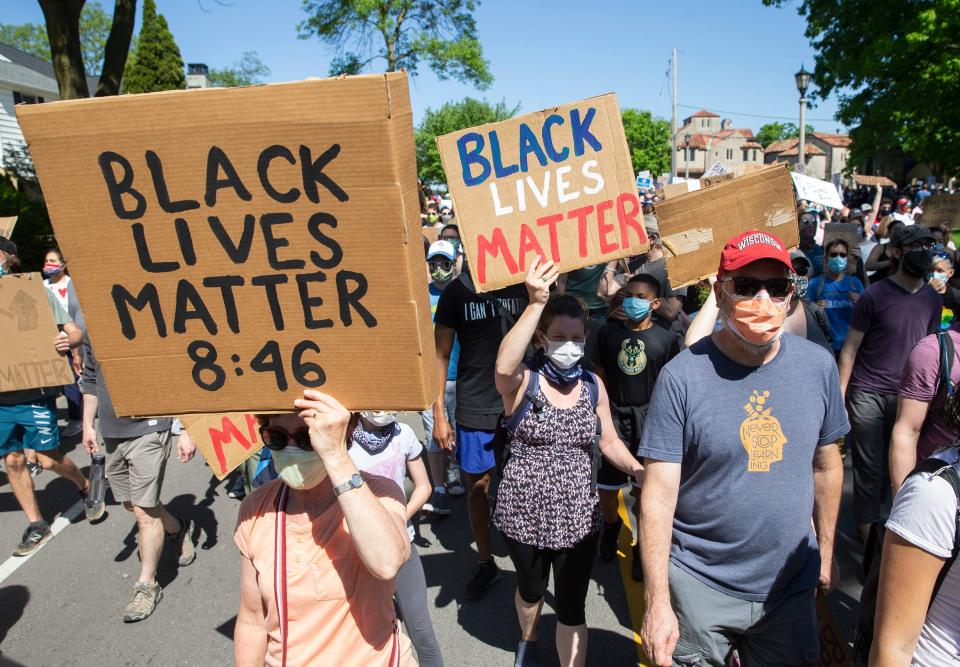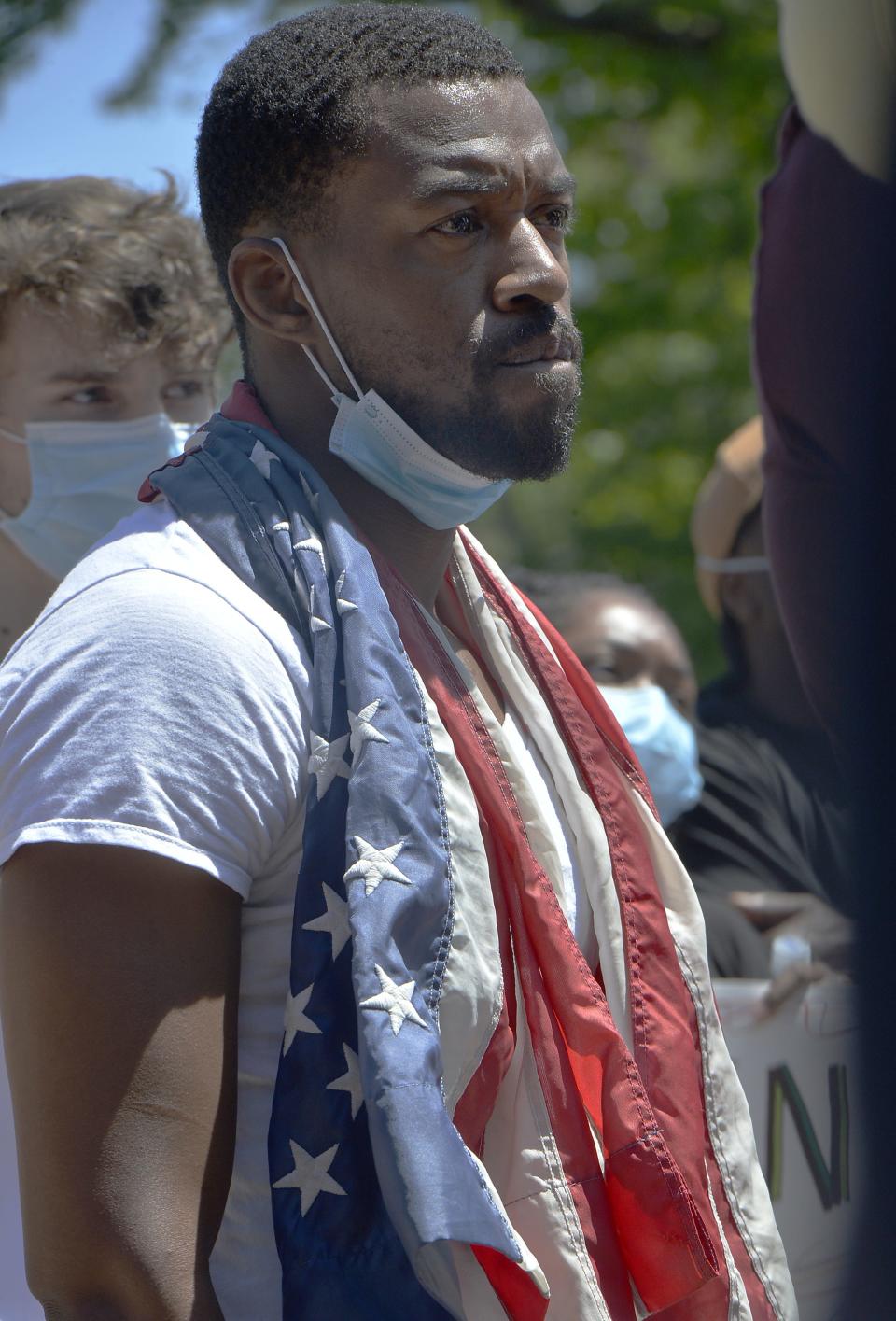From coastal cities to rural towns, breadth of George Floyd protests – most peaceful – captured by data
WASHINGTON – Since President Donald Trump's election, mass demonstrations have largely been concentrated in major cities. The Women’s March, for example, has drawn massive crowds in Washington, D.C., and other metropolitan areas in the past three years. In 2018, thousands took to the streets to support the special counsel investigation on Russia.
But the death of George Floyd, a black man whose neck was pinned to the ground under the knee of a Minneapolis police officer, sparked the most widespread mass demonstrations in recent memory. Despite the threat of a global pandemic, crowds large and small – from rural towns, to suburbs, to big coastal cities – gathered to protest racial injustice and police brutality against African Americans.
The vast majority – 80% – appeared to be peaceful, according to new research that contradicts the emphasis the White House has often put on the instances of looting and rioting.
As of Tuesday, more than 970 protests had taken place in about 400 cities and towns across the country, according to research conducted by the marketing firm Ipsos and teams from the Universities of Chicago and Oxford.
Where they are: Tracking protests across the USA in the wake of George Floyd's death
"The numbers and the breadth are actually pretty impressive," said Chris Jackson, senior vice president at Ipsos. "We're seeing these protests happening in all 50 states. ... It's not just the big cities; it's towns across the board. And the large majority of these protests have been peaceful protests."
Trump, who has described himself as a "law-and-order" president, has been sharply critical of the protesters and has urged authorities to "dominate" the streets, including in discussions with governors in which he accused them of being "weak" in their responses.
Using data to track protests
Researchers scraped social media feeds to identify where protests were occurring on a given day and then cross-referenced them against news reports, satellite imagery and Google Street View for verification.
Researchers also used cellphone aggregate data to find large gatherings of people. Jackson said gatherings that were not captured on social media weren't included in their data.
"I don't think this is necessarily the total of everything that's happened. ... This is the best picture we can get in this period in time," Jackson said, adding that the data will continue to change as protests continue.
A separate analysis by USA TODAY, which relied on local news coverage, found widespread demonstrations in more than 1,000 places across all 50 states.
'Tipping point' even in predominantly white states
Surprisingly, Jackson said, protests were occurring even in solidly or moderately conservative places where police abuse of black people isn't a typical rallying cry. For example, Nebraska, Montana, Wyoming and the Dakotas – predominantly white and solidly red states that don't normally deal with issues involving racial injustice – each saw a handful of largely peaceful demonstrations.
Nebraska may be mostly white, but it has one of the fastest-growing foreign born populations, said Sergio Wals, who teaches at the University of Nebraska-Lincoln’s political science department and its Institute for Ethnic Studies. The local school’s English Language Learning Program teaches children from families representing about 150 different countries and 125 different languages.
The protests in Lincoln and other parts of the state may reflect the growing diversity. But many people were also just moved by the brutality they saw in the video of Floyd being held down by officers, Wals said.
Widespread demonstrations: George Floyd protests reach even small cities as America confronts systemic racism
“Whomever watched those painful eight minutes and 46 seconds, that’s just the trigger, that’s just the tipping point for a lot of people,” he said.
Also poignant, he added, was a televised scene during the protests in Lincoln when a top state patrol officer knelt with protesters on the steps of the Capitol for nine minutes.
“That was a very powerful image of a glimpse of change we might just be about to see,” Wals said.

Protests were widespread in Southern states such as Louisiana, Alabama and Mississippi, where the issue of race has long been at the forefront. But states such as Virginia and West Virginia also saw protests far from more liberal, urban centers.
The protests are a reflection of how much has changed in a relatively short time. In 2014, only about 4 in 10 people saw the deaths of Michael Brown in Ferguson, Missouri, and Eric Garner in New York as indicative of broader problems in policing. Today, nearly 7 in 10 Americans said Floyd's death reflects broader issues, according to a Washington Post-Schar School poll.
"This is just the culmination of a lot of history," said Tamara Herold, director of the Crowd Management Research Council at the University of Nevada, Las Vegas. "It's tied to the larger issue of racism which affects all of our political and government systems."
Protests continue
Protests over Floyd's death continued as his funeral was held Tuesday. Derek Chauvin, the white officer who held his knee on Floyd's neck, is facing a second-degree murder charge. Three other officers were charged with aiding and abetting.
National media coverage has largely focused on major cities, where peaceful protests were marred by looting, vandalism, burning cars and thousands of arrests.
In Minneapolis, USA TODAY reporters witnessed small groups, dressed in black, carrying shields and wearing knee pads, destroy property and threaten journalists who photographed them.
In Washington, D.C., tensions rose between the federal and municipal governments over how to police the protests, as Trump discussed deploying active-duty forces. Thousands – among the largest crowds seen since protests began in May – took to the streets on Saturday, simultaneously marching and protesting in different parts of the nation's capital.
In New York City, protests were largely peaceful, although hundreds were arrested. A police officer who was captured on video shoving a woman is facing assault and other charges. More than 300 miles north, in Buffalo, police officers were suspended and charged with second-degree assault after a viral video showed them pushing a 75-year-old man to the ground.
Historical comparison
Terry Madonna, director of the Center for Politics and Public Affairs at Franklin and Marshall College in Pennsylvania, called the protests “the largest we’ve had in modern history.”
“Right now,” he said, “the dominant aspect of American politics is police and police reform.”
Herold, the director of the Crowd Management Research Council, said the scope is reminiscent of the Civil Rights movement and Vietnam War protests in the 1960s and 1970s but it’s difficult to compare. The size, location and other details of the past events were not documented the way today’s actions are, she said.
Herold sees some factors not present in past movements that likely contributed to the size and scope of the recent protests. Because of the pandemic, for example, more people are unemployed or working from home, making it easier for them to participate.
People are also wearing masks. Those who study the dynamics of crowds say a sense of anonymity encourages more violent or disruptive behavior.
Herold said that could contribute to the fact that about one in five of the recent protests had observable violence or damage, according to Ipsos.
“I think this number is a little bit higher than you would anticipate,” Herold said. “Most demonstrations, most protests, are peaceful. Very few ever involve violence.”

Protests in swing states
The top battleground states of Pennsylvania, Michigan, Wisconsin and Florida that will likely decide the 2020 presidential election saw protests not only in their largest cities but also in more conservative parts of the states.
“If there was a rock-ribbed Republican area in Michigan, it’s West Michigan,” said David Dulio, director of the Center for Civic Engagement at Oakland University.
But on Sunday, more than 400 people marched in Holland to call for an end to police brutality.
“Silence is violence,” read the sign of one protester, a white woman who joined others in front of Holland’s city hall.

Other parts of Western Michigan where there were protests included Grand Rapids and Kalamazoo, one of the areas recently targeted by a liberal group hoping to weaken Trump’s support with seniors and small-town, rural voters.
The ads in American Bridge’s “Swing County Project,” feature voters who backed Trump in 2016 and now support Joe Biden, the presumptive Democratic nominee.
Dulio said communities like Grand Rapids and Kalamazoo are becoming more diverse and Michigan is mirroring most of the country in its breadth of protests. But, he added, the members of the congressional delegation who represent swing districts are being pressured by Republicans to say whether they back calls to “defund the police.”
“That’s something that they’re going to have to confront,” Dulio said. “I think it was significant that Joe Biden said he’s not on board with that. Maybe that gives those Democrats some cover.”
Jackson, of Ipsos, said it's too early to tell whether the protests will lead to a boost in turnout this fall.
"You can also make the argument that people participating in these protests are so disillusioned that they don't show up," he said.

In Pennsylvania, where the Republican speaker of the House this week called for a special session to address police violence, events are moving so quickly that it’s hard to know what will happen next, Madonna said.
“We’re going through a period of tremendous change,” he said. “How it all works out right now is anybody’s guess.”
Perceptions change: Americans' views of police drop significantly in one week as protests continue, survey finds
Contributing: Trevor Hughes and Ryan Miller
This article originally appeared on USA TODAY: George Floyd: Black Lives Matter, police protests are widespread
